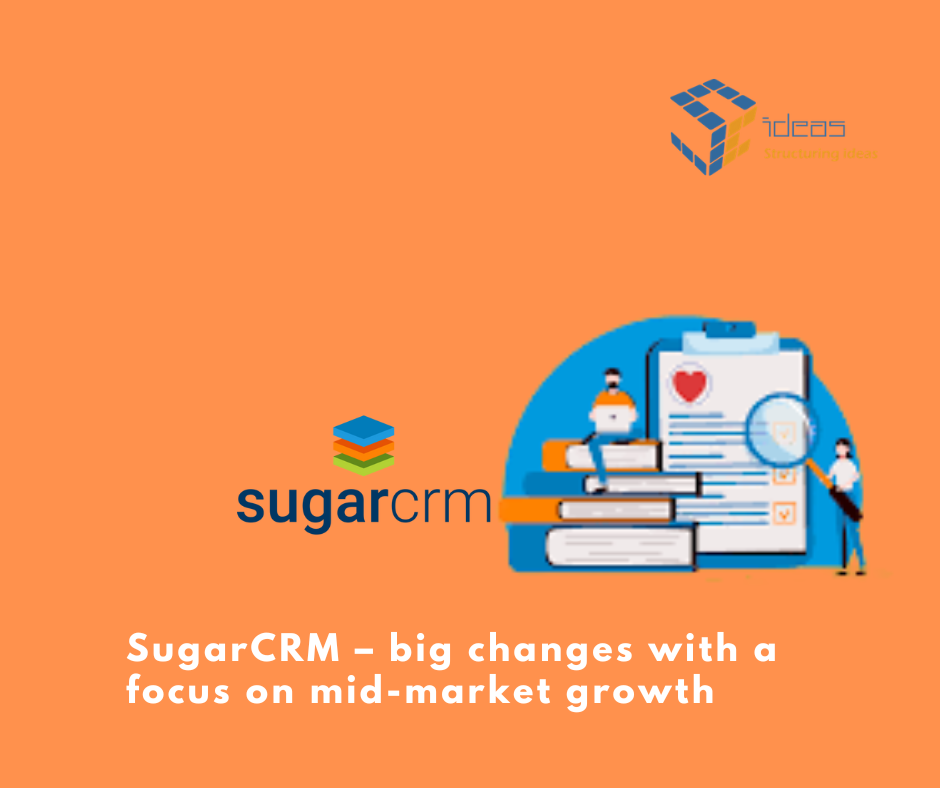At SugarCRM’s Fall Analyst Summit, the company reported 53% percent year-on-year bookings growth and 16% increase in annual recurring revenue per account. Sugar is exceeding the Rule of 40, meaning its growth rate, added to its EBIDTA, is greater than 40%. This is significant in Sugar’s journey from an on-premise vendor to a cloud performer, and demonstrates how Sugar, under Charlton’s leadership, has made some significant changes over the past few years.

First, Sugar has restructured its sales model and channel. Sugar moved from 80% indirect sales in FY2017 to 29% in indirect sales in FY 2023. Sugar accomplished this by growing its internal sales team and acquiring part of its channel: In November 2020 Sugar acquired W Systems, one of its largest global implementation partners and its 2020 North American reseller of the year. This gave Sugar product ad implementation talent and sales resources but also key IP in terms of add-ons W had developed and productized for Sugar customers – including document management; calendar enhancements; and integrations for common mapping, file storage, and messaging services.
Second, Sugar built out its ecosystem by acquiring Sugar Outfitters, an online marketplace of Sugar extensions, add-ons, and templates – effectively buying itself an ecosystem marketplace. This will enable Sugar to have greater visibility into adoption and usage of add-ons and further enable its expansion strategy by making it easier for customers to find, try, and get value from pre-tested partner applications.
Third, Sugar has expanded its portfolio. Both organically and by acquisition, Sugar has added marketing and service capabilities, and announced new digital self-service capabilities while continuing to expand the capabilities of the platform is areas such as Artificial Intelligence (AI). At the same time, it has made investments in user experience with a modernized and simplified user interface. Today, Sugar has solid capabilities across sales, marketing, and service, strong low-code/no-code capabilities, a modern time-aware Customer Data Platform (CDP), and a strong foundation of AI capabilities on which it continues to build.
Finally, Sugar has brought a new level of discipline to its sales and customer delivery models. A sharp focus on an Ideal Customer Profile (ICP) – mid-market growth companies – drives a more sustainable growth model and a community of customers that can learn from and support each other. Historically, Sugar had a lot of small partners that took advantage of the power of the Sugar platform to deliver whatever customers wanted – using it as more of a development platform than a CRM platform in many cases, meaning a lot of one-offs that were costly to support. Bringing sales in-house and refocusing much of its channel efforts with more scalable distribution partnerships (like the one Sugar signed with Redington Gulf for Middle East distribution in April 2022) help drive consistency of use and support needs as well as more consistent brand recognition in the marketplace.
That discipline has extended to customer success as well. In the past, because in many cases partners owned the relationship, Sugar had, at best, limited connection with many customers. Lack of ongoing interaction with customers meant they often didn’t touch them until renewal time, or when it was too late. Today, Sugar has implemented a professional, scalable customer success model with a predictable view of customer health. This is obviously critical for customer retention, a key factor in being able to maintain the Rule of 40. Sugar is also continuing to invest in SugarClub to drive greater customer evangelism and community. This evangelism will be important, in addition to Sugar’s investments in outbound marketing, to driving greater brand visibility in the market.
My take
Sugar has made a lot of progress in the past few years in bringing structure and data-driven discipline to its operations while increasing its product breadth – which enables it to grow its footprint in its customer base while managing margins.
Sugar’s biggest challenge – still – is brand awareness. In a noisy and crowded CRM market, it sits between the better-known players and smaller commodity and specialized providers. The combination of a single suite and data model for sales, marketing, and service at an attractive price point is the right one for its target customers, particularly as access to capital tightens and many mid-market firms face an uncertain future.
Getting that message out to prospects will take continued focus and discipline – which, thus far, the new leadership team has shown it has. It will also take more advocacy and evangelism from customers, which Sugar is beginning to build through investments in customer success and closer customer relationships.
xhamster,
xvideos,
hentai,
porn,
tiktok download,
mp3 download,
MP3 download,
download tiktok,
hentai,
Nike Mens High Top,
youpor,
Watch Get Out,
xhamster,
xvideos,
hentai,
porn,
tiktok download,
mp3 download,
MP3 download,
download tiktok,
hentai,
Nike Mens High Top,
youpor,
Watch Get Out,